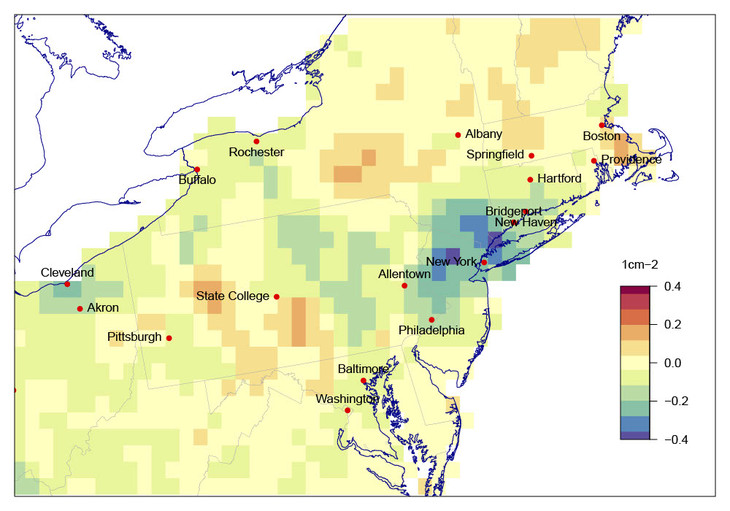
A map showing the difference in nitrogen dioxide concentrations in the northeast United States for April 2020 with respect to the previous four years, with oranges and reds indicating higher concentrations and greens and blues showing lower concentrations. IMAGE: GUIDO CERVONE, PENN STATE
Francisco Tutella, November 11, 2020

UNIVERSITY PARK, Pa. — The measures instituted in April to help curb the spread of COVID-19 across the United States may hold clues for improving air quality, according to researchers.
The scientists examined the pandemic’s effects on two key pollutants – nitrogen dioxide and fine particulate matter -– and human mobility. They found that as individuals limited their travel, nitrogen dioxide levels fell significantly while levels of fine particulate matter rose in certain parts of the country. They report their findings in the Bulletin of Atmospheric Science and Technology.
“One of the big uncertainties with trying to forecast future air quality is how the atmosphere will respond to lower emissions of certain pollutants,” said Guido Cervone, professor of geography, and meteorology and atmospheric science at Penn State. “COVID-19 gave us some insights into the effects of lower emission rates on the environment. We had this unique situation that showed us what happens if people stop driving.”
Read the full article here: Air quality data during COVID-19 may help improve models, guide interventions


